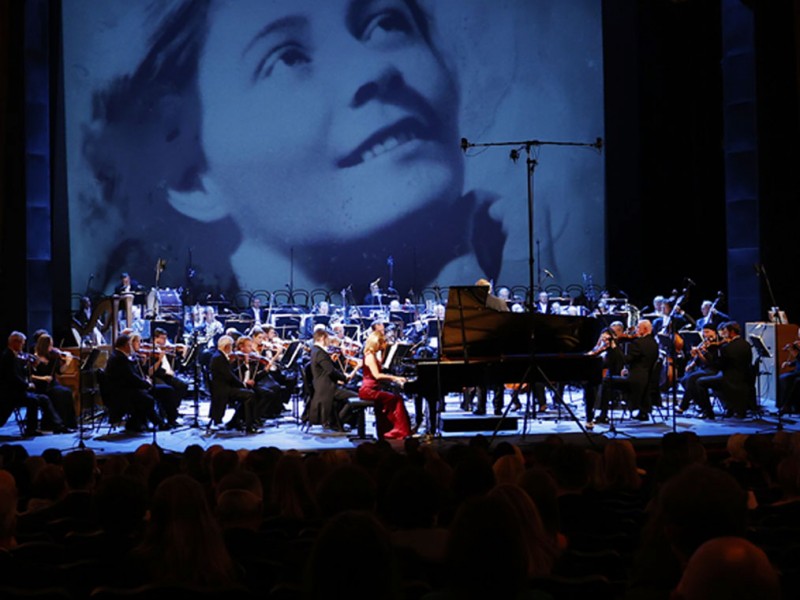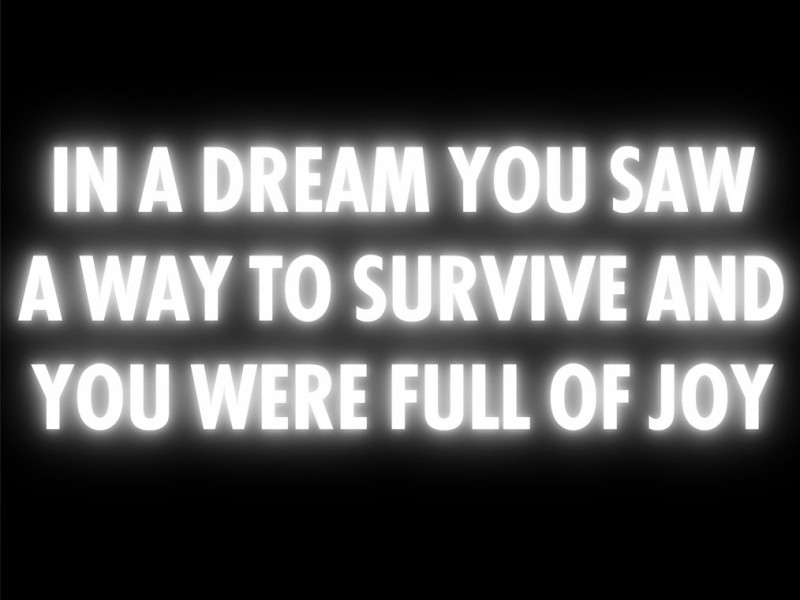An exhibition of works themed on the monumental elements of earth, water, fire and air by Aboriginal artists Judy Watson and Yhonnie Scarce will open this November at TarraWarra Museum of Art, as part of a collaboration with Ikon (Birmingham, UK). Looking Glass: Judy Watson and Yhonnie Scarce, 28 November 2020 - 8 March 2021, represents both a love song and a lament for country; a fantastical alchemy of elemental materiality, through paintings, video and sculptural works. The exhibition is presented with the support of the Museum’s major exhibition partner, The Balnaves Foundation.
Exhibition curator, Hetti Perkins, said the artists are concerned essentially with Australia's 'secret war'—a battle fought on many fronts from colonial massacres and Stolen Generations through to the British atomic bomb tests at Maralinga. “The seductive beauty of Watson’s and Scarce's works belies their powerful message about the sustained campaign of the destruction of country, culture and community in Aboriginal Australia—their work is a kind of 'tender trap'. With the devastating evidence of climate change in Australia, manifest in apocalyptic wildfires and storms, this exhibition delivers an urgent message,” Ms Perkins said.
Director of TarraWarra Museum of Art, Victoria Lynn, said the pairing of Watson and Scarce brought together two of Australia’s most lyrical and poignant artists. “Watson’s ochres, charcoal and indigo pigments, pooled upon washed canvas, offer a synergy with Scarce’s glass works and their fusion of fire, earth and air. Together these artists present a panoptic and holistic interpretation of country where the creation and experience of art is mnemonic for the lived, remembered and inherited history of Aboriginal people,” Ms Lynn said.
Born in Mundubbera, Queensland, Judy Watson derives inspiration from her Aboriginal matrilineal Waanyi heritage, working from site and memory to reveal Aboriginal histories and following lines of emotional and physical topography that centre on particular places and moments in time. Her practice often draws on archival documents and material to unveil an unceasing and institutionalised discrimination against Aboriginal people—the ‘secret war’ to which Perkins refers. Watson makes work that is politically-charged, but she deliberately avoids didacticism, as she explains:
“Art as a vehicle for invention and social change can be many things, it can be soft, hard, in-your-face confrontational, or subtle and discreet. I try and choose the latter approach for much of my work, a seductive beautiful exterior with a strong message like a deadly poison dart that insinuates itself into the consciousness of the viewer without them being aware of the package until it implodes and leaks its contents.”
A number of Watson’s works were made in response to visits she undertook to see English, Scottish and Irish sites of prehistorical significance—including standing stones, circles and hill figures at Stonehenge, Avebury, the Outer Hebrides and Orkney—as well as visits to The British Museum and The Museum of Archaeology and Anthropology at the University of Cambridge. As the artist states: “My idea was to have images of standing stone forms—shadowy or very ghostly presences—and the floating of Aboriginal cultural material across the top. It’s a layering of experiences and a layering of understanding of what is culture.”
Yhonnie Scarce was born in Woomera, South Australia, and belongs to the Kokatha and Nukunu peoples. Working with glass, she explores the political nature and aesthetic qualities of the material—in particular corresponding to the crystallisation of desert sand as a result of British nuclear tests in Maralinga, South Australia, during 1956-63. The shocking disregard for the safety of local Aboriginal people at the time was symptomatic of the pervasive racism that characterised much of Australian history since European settlement.
Scarce explains the personal nature of the politics: “When conducting family research or research in general related to issues of colonisation, it can be a difficult process of discovery. It’s an emotional journey and it’s not necessarily complete, but it’s a way of helping you deal with a tormented history. It’s important to speak about what happened because it’s still affecting Aboriginal people today.”
As part of Scarce’s ongoing research for the exhibition, the artist began a residency in Birmingham, a city with a significant history as a centre for glass manufacturing. She also undertook research at the University of Birmingham where scientific calculations that led to the development of the atom bomb were made during World War II—a weapon which went on to be tested at multiple sites.
Scarce will present a major installation in TarraWarra’s North Gallery comprised of 1000 glass yams cascading from above as an evocation of the nuclear test of the 'Breakaway' bomb in Maralinga, which sent radioactive clouds across the land of Aboriginal people living in the area. Each yam will be 'mapped' according to the dark areas of the trajectory of this poisonous cloud.
In the adjoining Vista Walk gallery, Scarce presents a group of bush plum glass sculptures which are burnt, melted, disfigured and pitted with craters, representing the aftermath of what was created in cloud chambers in early nuclear energy experiments. These new works convey a clear and uncompromising message about the devastating impact that the nuclear tests had on Scarce’s homeland.
During 2021 to 2023, Looking Glass will tour across Australian museums and galleries supported by NETS Victoria: Flinders University Museum of Art (SA): 26 April – 2 July 2021. Cairns Art Gallery (QLD): 12 November 2021 - 20 February 2022. Queensland University of Technology Art Museum (QLD): 12 March - 15 May 2022. Plimsoll Gallery (TAS): 12 August – 23 October 2022
Mildura Arts Centre (VIC): 8 June - 6 August 2023 and Wangaratta Art Gallery (VIC): 26 August - 22 October 2023.
TarraWarra Museum of Art and NETS Victoria pay tribute to the ongoing culture of Aboriginal and Torres Strait Islanders. We pay our respects to Elders past, present and emerging, and acknowledge the Boon Wurrung and Woiwurrung (Wurundjeri) Peoples of the Kulin Nation as the traditional custodians of the lands and waters on which our respective offices and TarraWarra Museum of Art stand.
For more visit: twma.com.au
Related Features
-
634
-
-
-

